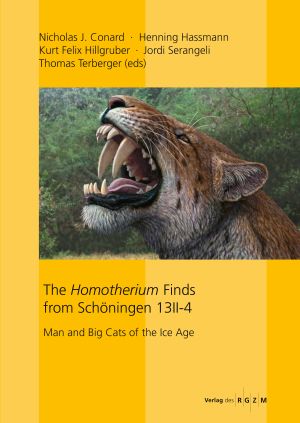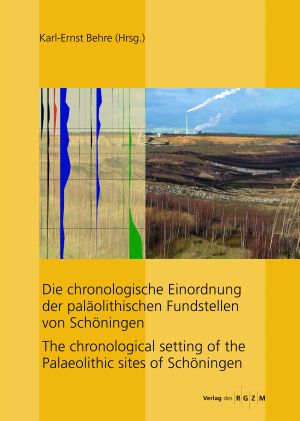Serangeli, Jordi
The Homotherium Finds from Schöningen 13II-4: Man and Big Cats of the Ice Age. Contributions of the scientific workshop at the paläon (Schöningen) from 05.06 to 07.06.2015
Big cats, including sabre-toothed cats, are for many people the symbol of a dangerous predator. In 2012, the first remains of the European sabre-toothed cats were discovered at the approximately 300,000 year old site of Schöningen, famous for mankind’s oldest wooden weapons. As a result of this discovery, a two-day scientific workshop was held in Schöningen in 2015 titled »The Homotherium finds from Schöningen 13II-4 and big cats of the Ice Age«. This volume is based on the lectures of this workshop and presents an overview of a topic that is crucial for human development, our coexistence with big cats. The aim of this volume is to address the various topics surrounding the European sabre-toothed cat. This includes the circumstances of their extinction, comparisons to extant big cats and their relationship to past humans.
Die Geologie der paläolithischen Fundstellen von Schöningen
For over 30 years, the Schöningen open-cast mine provided excellent insights into the geology of the Ice Age in Lower Saxony. Especially the deposits of the last 400000 years (Middle and Late Pleistocene) were repeatedly exposed by profiles in open pit mining.
It is the merit of Dietrich Mania to have systematically documented these unique archives with the support of Hartmut Thieme. The second volume of the Schöningen series presents this fundamental work in a comprehensive manner. At the same time, Jörg Lang, Jutta Winsemann and others provide an overview of the results of their geoscientific studies conducted since 2009. The contributions offer a comprehensive picture of the Schöningen stratigraphy and the formation of the lake, on whose banks horse hunters dissected their prey. Finally, Gottfried Böhme's study of the excellently preserved fish and amphibian remains from the siltation sequences 1-4 is an essential element in characterizing the climatic conditions of the period 300,000 years ago.









